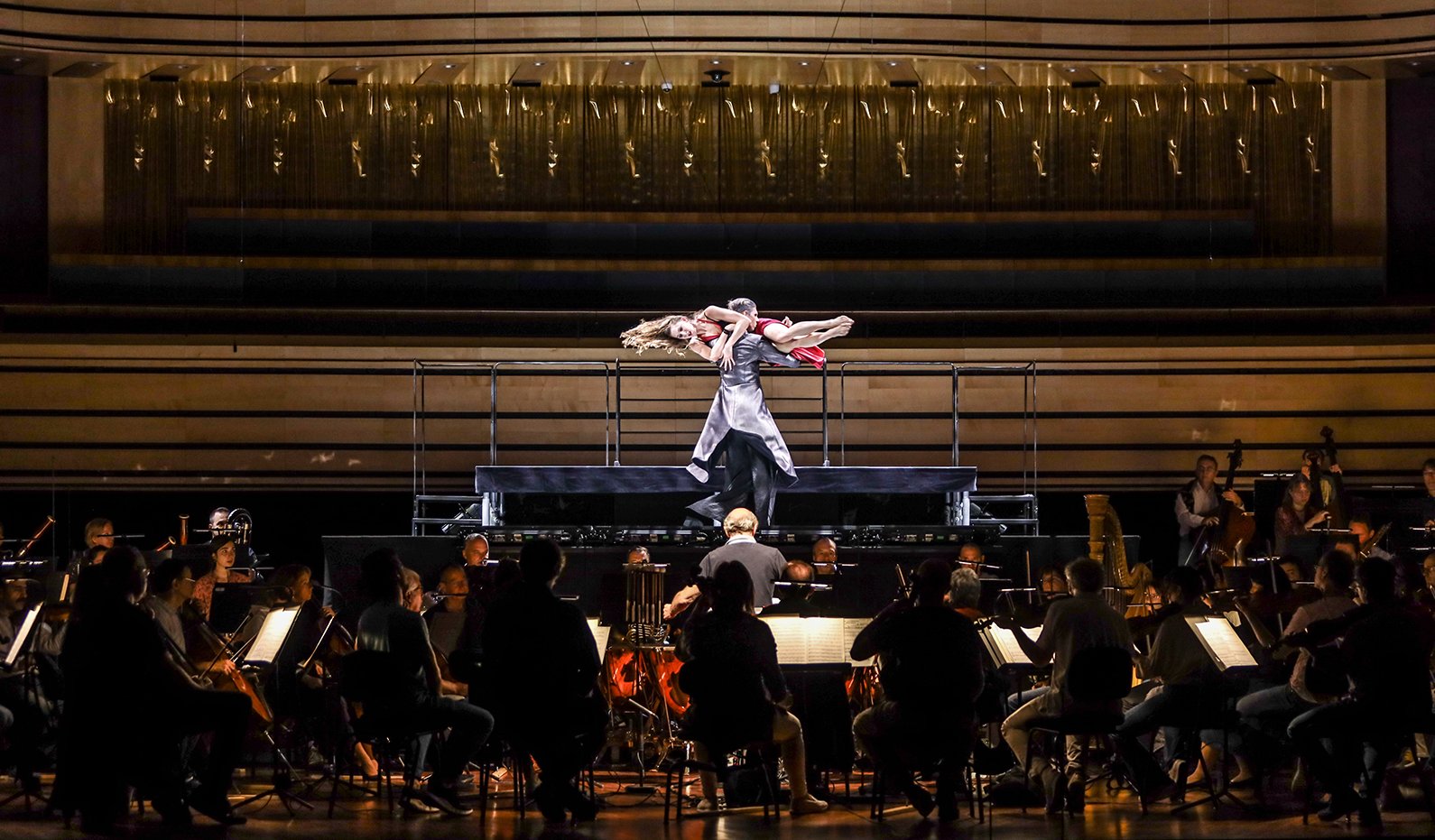



Orchestral concert: Bartók
Láng, Cser, Eva Duda Dance Company, Fischer
Program
Featuring
Other information
The event is about 2.5 hours long.
About the event
“Where is the stage? Outside or within?”, asks the Bard in the Prologue to Bluebeard’s Castle. This dilemma appears in all three of Bartók’s one-act pieces – both works in this program, as well as the Wooden Prince –, because what we can see and hear is internal drama. The first of the musical lessons exploring the psyche of and relationship between men and women is one of Bartók’s most beloved works. The Miraculous Mandarin, with a plot that explores questions of the body and soul, will be brought to life by the Eva Duda Dance Company. After the interval, we will descend into the deepest recesses of the male soul: Krisztián Cser, who has been awarded the Hungarian Golden Cross of Merit, singing Bluebeard and internationally acclaimed Dorottya Láng in Judith’s role will open the seven most famous doors in the history of music.
“In a manor house, three outlaws force a young girl to seduce men whom they then rob”, begins Béla Bartók’s description of The Miraculous Mandarin. In Menyhért Lengyel’s nightmare tale, the outlaws cannot overcome the wealthy Chinaman who comes after two poor men and besieges the girl with his love. They strangle him, stab him with a sword, hang him, but to no avail. Finally, the girl fulfills the mandarin’s desire, and he drops dead. Bartók’s one-act opera caused such a scandal at its premiere in Cologne in 1926 that the mayor banned further performances because of the openly depicted orgasm. Aside from the theme, the music is also progressive. Bartók breaks with classical tonality and uses dissonance as a means of expression. He puts the percussionists in the foreground, writes an unorthodox part for the wind instruments, and portrays the story with a wild, rhythmic, pulsating sound – at least musically. As for the spectacle, after the great success in 2023, audiences will again be able to see the pantomime interpreted by the dancers of the Eva Duda Dance Company, known for its dynamic and daring choreographies.
Bluebeard’s Castle, Bartók’s first stage work is also a standard repertoire piece. Bluebeard, often described as a monster destroying women was sentenced to death in 1440 for killing several wives. This true story was elaborated by, among others, writer Béla Balázs, who “wanted to magnify the dramatic atmosphere of the Szekler folk ballads for the stage” with his work. Bartók was intrigued by the philosophical depths of the ballad, this beautiful portrayal of the mysteries of the soul, and composed an opera from it. In 1911, the piece was rejected by the Lipótváros Casino, one of Budapest’s cultural centers, as unfit for production, and its premiere had to wait until 1918. Bluebeard’s Castle seems to have two characters, but besides Judith and the Duke, we should not forget the three former wives, the bard, who introduces the play with prose, and the castle that comes to life with music and once even sighs. The seven doors follow one another as seven symphonic movements: the torture chamber, the armory, the treasury, the garden, the splendid kingdom, the lake of tears and the chamber of the three previous wives, are each given a unique yet unified character by means of distinctive dissonances, subtly blended timbres and a stunning key design.
Did you know? The Miraculous Mandarin premiered in Cologne on November 27, 1926, with Jenő Szenkár conducting; Bluebeard’s Castle premiered in Budapest on May 24, 1918, with Egisto Tango conducting; the BFO performed The Miraculous Mandarin most recently on October 15, 2023 in Rome (with the participation of the Éva Duda Company), and its most recent performance of Bluebeard’s Castle was on May 6, 2019 in New York (featuring Ildikó Komlósi and Krisztián Cser); Iván Fischer conducted both concerts.
Contemporary events: Italian composer Giacomo Puccini’s opera Turandot premiered at the La Scala in Milan on April 25, 1926 / Russian author Isaac Babel published his collection of short stories Red Cavalry in 1926 / The Forms of Knowledge and Society, by German philosopher Max Scheler, was published in 1926 / Béla Czóbel created his painting Nude with Red Tulip in 1926 / Soviet Russia signed the Treaty of Brest-Litovsk with Germany and Austria-Hungary on March 3, 1918 / Russian composer Sergei Prokofiev’s Symphony No. 1 premiered on April 21, 1918 in Petrograd (present-day Saint Petersburg) / German painter George Grosz completed his painting The Funeral in 1918 / German philosopher Ludwig Wittgenstein completed his work Tractatus Logico-Philosophicus in 1918 / Calligrammes, a collection of poems by French poet Guillaume Apollinaire, was published in 1918.